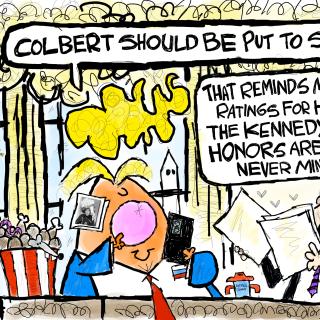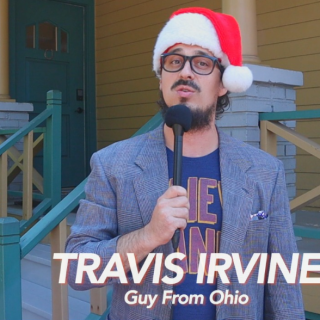Advertisement
In 1978 the United States Supreme Court rendered its decision in Regents of the University of California v. Bakke, a case about affirmative action in higher education. It opined that colleges and universities could not use race as an exclusive basis for granting admission to an institution of higher learning because it violated the Fourteenth Amendment’s equal protection clause and Title VI of the 1964 Civil Rights Act.
Allan Bakke was a white man, an engineer, and a veteran of the United States Marines. When he was thirty-two years old, he applied to a number of medical schools, including the University of California Davis School of Medicine without success. U Cal Davis rejected both his applications. (When I initially read the facts of the case back in the day, my first reaction was that he was probably turned down because of his age. At thirty-two, he was eight years older than the average first-year medical student. Indeed, two institutions rejected his application citing that reason. This was not an uncommon practice at the time.)
After his second rejection by U Cal, Bakke received a tip from a staff member at the school who told him his grades and test scores were higher than those of some minority students who were admitted. The school only admitted one hundred students each year, and saved sixteen spaces specifically for racial minorities. Eighty-four students had already been chosen, and so there was no space in that year’s class available for Bakke. He filed a lawsuit alleging that the university had discriminated against him on the basis of his race when they refused to admit him. In a 6-3 decision, the Court ruled that quotas such as the one at U Cal Davis were unconstitutional, but that race could be one of several factors used to make admission decisions. They also ordered the school to admit Bakke to the next class. The Bakke case was one of the earliest to allege the concept of so-called reverse discrimination against whites.
I was reminded of Bakke and the two cases–one from Harvard–the Supreme Court heard about affirmative action in college admissions last fall as I began reading The Last Negroes at Harvard. The campaign to desegregate public education in America began in 1935 when Charles Hamilton Houston and his protégée, Thurgood Marshall, lawyers for the National Association for the Advancement of Colored people (NAACP), developed a strategy of challenging segregation in universities and professional schools. Their first case, State of Missouri ex. rel. Gaines v Canada (1938) began a fight that culminated in the Supreme Court’s unanimous ruling in Brown v Board of Education of Topeka, Kansas (1954) that declared segregated education in public schools violated the Fourteenth Amendment of the Constitution.
Five years later, eighteen young black men from across the country entered Harvard College. They would be part of the class of 1963. While Harvard had a few black students, the admittance of these men en masse surely was part of a concerted effort to increase the number of black students at the college. One need only look at the changing landscape of civil rights in America during the time period to reach this conclusion.
Garrett and Ellsworth describe the men’s journey. Harvard was “an institution that, for most of its long history, employed and enrolled men who openly despised and abused our ancestors. We would be attending a school that was founded and funded on the backs of our enslaved forebears ...We were headed to a campus where, until about eighty years before, each student was given a personal Negro servant (emphasis mine, and so much for northern liberalism with regard to race), a campus that in the 1920s barred Negroes from the dormitories and had a branch of the Ku Klux Klan." In 1952, a cross was burned in front of a dormitory where a few Negro students lived; the administration decided it was “meant as a prank” and took no action. It must have seemed to the men that they were walking into the lion’s den without Daniel.
Those eighteen men carried the usual hopes, fears, wishes, and wants of college freshmen, not only for themselves, but their families, communities, and the Black race. The men were from various socioeconomic classes of the Black community. For the most part, all they had in common was that they were black, young, and excellent students. But perhaps unrealized by the men, their tenure at Harvard would be marked by the quickening of the mid-twentieth-century freedom movement in all its iterations.
Kent Garrett is a son of the Great Migration, that mass movement of 1.75 million Black Americans from the rural south to the urban north that occurred from about 1910 through about 1930. His parents were from South Carolina and settled in Brooklyn, New York. He was a good student, and in the sixth grade it was recommended that he sit for the test to determine if he was eligible for the Special Progress program. Students from all over the city who passed the test were admitted to schools where junior high was only two years, and at the end of that time, they were sent to one of three city high schools that offered a college-prep curriculum. It was from there the young men were chosen to apply to Harvard.
At first blush, Garrett does not seem particularly attached to Harvard; indeed prior to writing the book, he seldom thought about Harvard and had little contact with the school after he left. He says he never contributed money, attended class reunions, or sent his photo and accomplishments to the school when solicited. He didn’t even own the obligatory tee shirt from his alma mater. (Even I once had a Harvard sweatshirt.) But underneath the indifference is pride. Ellsworth, his coauthor and partner, reminded him that he mentioned it in their very first email exchange.
I was surprised to learn that Garrett and his classmates seemed not to have experienced much open hostility while at Harvard. Of course they were curiosities and often stared at. They mostly took their meals at the ubiquitous black table in the cafeteria. Several of them, including Garrett, reported that a white person had confessed that he was the first Negro he had ever spoken with. But they weren’t greeted with open arms, either. Had it not been for the programs organized by the House Master–the name for the faculty members who lived in the dorms with students–they might never have participated in extracurricular activities. As quickly as possible, though, they made it a point to leave campus and seek out the closest black communities where they found emotional sustenance, cultural and recreational opportunities, and were able to release the tension they were surely under at Harvard.
These eighteen young men were strivers born of strivers; they knew to keep their heads down and their eyes on the prize. All but one of them graduated with the class of 1963–the student who did not has had a career as a respectable jazz musician–along with a Rockefeller, a Vanderbilt, Marshall Field V, and a Saltonstall. As alumni, they joined the ranks of W. E. B. DuBois, Theodore Roosevelt, Franklin Roosevelt, and John F. Kennedy.
The campus was brimming with art installations, music and theater productions, and lectures and presentations: a volunteer from the Mississippi civil rights movement, James Farmer of the Congress on Racial Equality (CORE), Whitney Young of the Urban League, and Bob Moses of the Student Non-Violent Coordinating Committee (SNCC) were just some of the prominent Americans who visited the campus. There was at least one lecture about the Black Muslims, and the men debated the merits of the documentary about the Black Muslims and Malcolm X produced by CBS reporter, Mike Wallace: The Hate That Hate Produced. And oh yeah, Garrett and a group of other of students once met and spent time with Malcolm X.
The Last Negroes at Harvard harkens back to that time when it must have seemed to many people that the “race problem” could and would be solved. No one could have predicted the tremendous upheaval of the 1960s: the splintering of the Freedom Movement from interracial cooperation to a longing for separatism; the Great Society and the War on Poverty; and the souring of the war in Vietnam were nowhere on the horizon when the men went to their first day of classes. Garrett and his fellow students were at the cusp of all those things, and they were changed profoundly by them, too. Their mere presence at that bastion of whiteness, the clarity of their vision, and their excellence changed Harvard and the country. Perhaps their most potent legacy was the beginning of a Black-student advocacy group which exists and supports Black students to this day.
Garrett now thinks quite a lot about Harvard. He has written this book, devours class anniversary books, and has gone to several reunions where the twelve survivors of the promising young men reconnect and reach out to current Black students. America has changed. Garrett has said Barack Obama’s election as the first black president portended for the group “a guarded optimism, a recharged belief in a changeable world . . . we’d all been hardened by the injuries and frustrations of our long years being Black in America, [but] I don’t think there was one of us who was not in some way seduced into feeling hopeful again.”
Garrett has had a successful, decades-long career in broadcasting. Yet looking back, he sardonically points out that his life has in part been lived and shaped by two seismic forces: Jim Crow and the presidency of Donald Trump.
The Last Negroes at Harvard would be a wonderful supplemental reader in an African American or American history class. It deserves a place right next to Anne Moody’s Coming of Age in Mississippi and is an important addition to this particular genre of memoirs.



